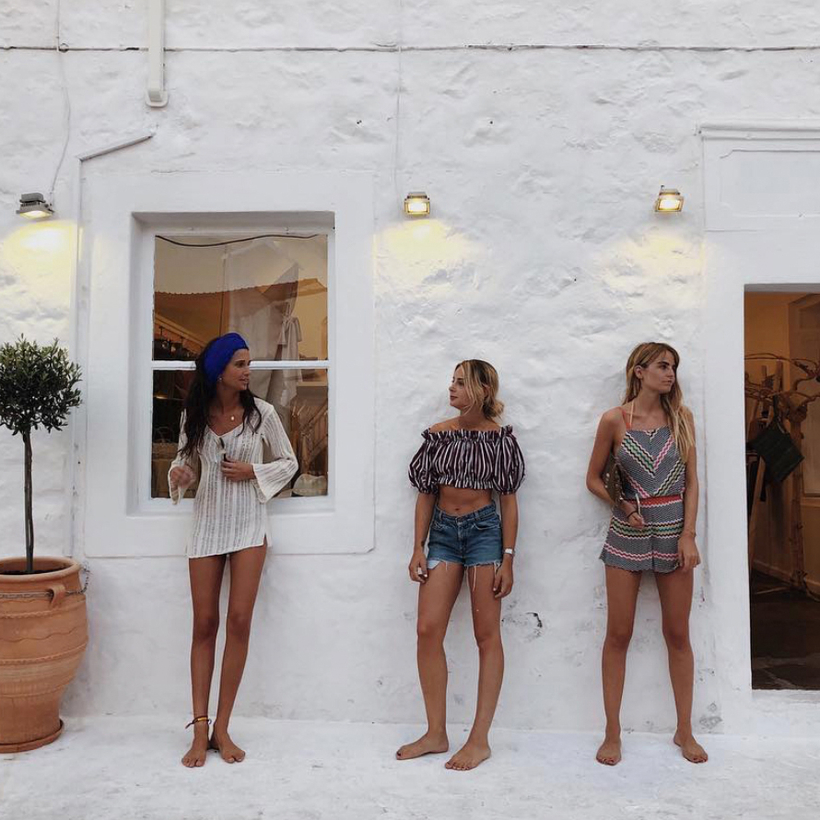“Where are you based now?” It’s become the conversation-starter, especially among those New Yorkers who ran for the hills in March and still haven’t come home. More than a few have returned, fortunately, either because of school re-starting or offices beginning to reopen or summer rentals ending. The streets are more alive now than they were in the spring, thanks to outdoor dining, and now that indoor dining has gotten the green light, there’s another hum of hope. But as the city enters autumn, it feels a bit melancholic.
No doubt, New York will come back. It has always been the place to be. A $5 coffee was well worth the price if outside the coffee shop you bumped into an Egyptian-Italian banker who invests in insect farming. Five-dollar coffee bought you information about a topic that a moment ago you didn’t even know existed. A trip to the overpriced Union Market came with a good chance of bumping into an artist, getting an invite to a painting studio in Bushwick, and, later, a sex party in Chinatown. But people left and took that spontaneity with them. Those who want to meet Egyptian-Italian socialites or wayward artists have to travel to find them.
So where have all the missing New Yorkers gone? Home to their parents, or to second homes in Connecticut or the Hamptons. Or, for the lucky few with the means and nerve to sidestep U.S. travel bans, Europe, where you can be in Rome this month and Paris the next, and where restaurants and bars are largely open. (For now, U.S. citizens are technically banned from non-essential travel to the E.U., a regulation that has been in place since March of this year.)
In the 20s, F. Scott Fitzgerald, Ernest Hemingway, and other artists left America for Paris, which didn’t have Prohibition and was recovering faster than the U.S. in the aftermath of World War I. Gertrude Stein, who arrived in Paris a decade before these young artists, dubbed the expats the “Lost Generation.” They had escaped, and threw themselves into the freedom and liveliness Europe afforded. This generation is escaping a different kind of Prohibition: social distancing.
Forbidden Fruit
U.S. passports used to be the golden ticket. Now, some Americans would cut off a hand for a European one. People are scrambling to unearth birth certificates from distant ancestry, or phoning up European friends and consulates for work permits—because the E.U. Schengen Area means free travel across its countries, some degree of normalcy, freedom to work from wherever, and a social scene that’s suddenly shifted east of the Atlantic.
I bumped into an American friend in Greece the other day. She produces documentary films, and a work permit got her into the country for the Symi International Film Festival. Now she plans on living between Spetses and Athens until at least November. “Why would I go back right now? Here I can go anywhere, live anywhere,” she told me. Similarly, another friend of mine, the interior decorator Remy Renzullo, secured a work permit to design a house in London for one of his clients. From there, he flew to Italy and, finally, Greece.

Usually based in New York, the Brazilian D.J. Duddha has also decamped to Europe, where he hosts weekend retreats in Melides and Costa da Caparica, Portugal. A group of 30 or so New York bankers, models, and lawyers have managed to sign on for the program, which features sound meditation, live performances, and dancing on the beach.
Crowding into the dimly lit tight quarters of nightclubs feels like entering into another era. The weather in Portugal is mild until November and living costs are low, especially when compared to New York. They had the four walls of Goldman Sachs as a backdrop for eight years; now, the bankers’ 12-hour workdays are mellowed by the ocean breeze.
“Why would I go back right now? Here I can go anywhere, live anywhere.”
Similarly, writers, actors, and artists are finding inspiration traveling through Europe. “I want to shoot a film in San Sebastián,” says film producer Olmo Schnabel, whose father is the artist Julian Schnabel. “Then Sicily when it starts getting cold.”
Even students are getting creative, now that most U.S. universities are online-only. An Italian-English Harvard student, Uberto Tarantelli, tells me he and his friends from schools including Georgetown, Babson, and N.Y.U. have created a makeshift campus in Paris for a month. “We’ve rented apartments next to each other,” he explains, and they attend their classes remotely. The following month, the group of 40 or so students will be on to the next destination. “Where do you recommend we go?” he asked me seriously.
“This is our time to start a new life,” another friend, Matteo Zevi, tells me. He and his wife, Sofia, a native New Yorker, just moved to Milan after living in New York together for 10 years.
The D.J. Duddha hosts weekend retreats—sound meditation, dancing on the beach—in Melides and Costa da Caparica, Portugal.
Working or studying remotely from Europe while on American hours means plugging in at three P.M. and finishing at midnight or one A.M. But most have found it’s a small price to pay for free mornings, and weekends spent traveling wherever you want. The pandemic has made it possible to work steadily and still be on the run. There is no guilt factor, and weekends are undeniably better when you can choose from 26 countries in the Schengen Area.
When I ask about returning to New York, the responses are always, “I don’t know. Why would I leave now?” The consensus seems to be to wait it out, like the fashion designer Pia Zanardi tells me: “Who knows. Maybe Christmas. I’m playing it by ear.” For now at least, the party’s in Europe.
Elena Clavarino is an Associate Editor for AIR MAIL


